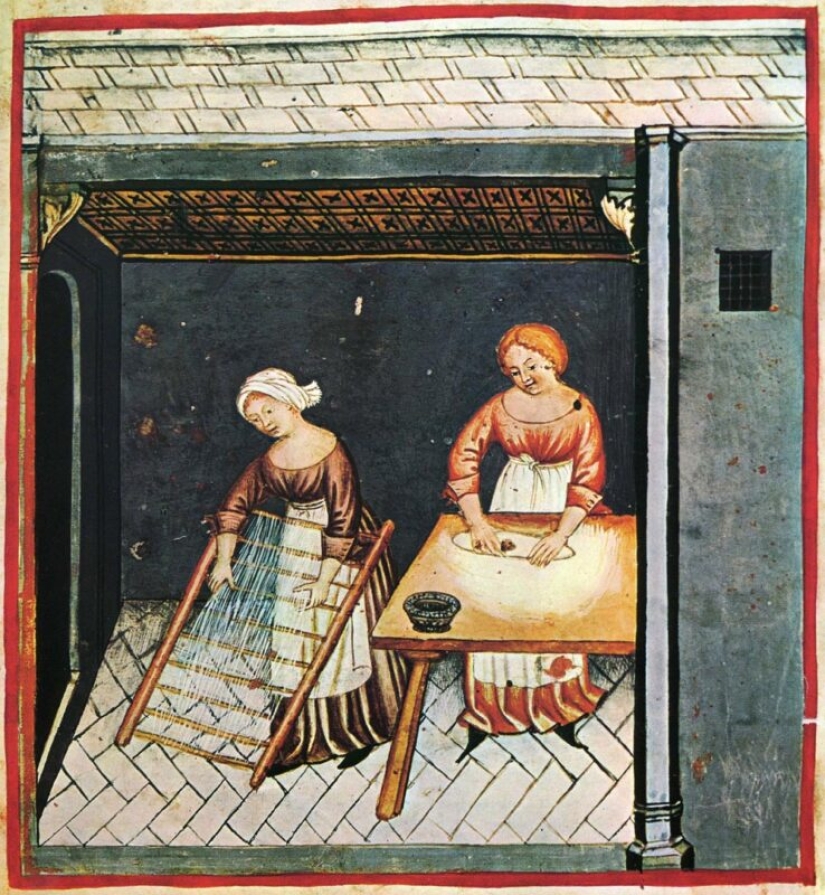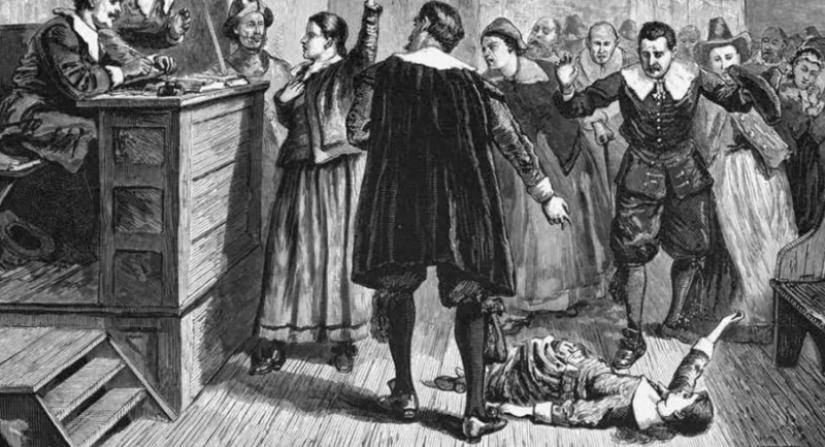Not only the kitchen, children and the church: the whole truth about the life of the townspeople of the Middle Ages
Cinema and literature have formed for us a certain image of a medieval city-dark, dirty, filled with suspicious personalities and rats. To match him and ordinary city women-untidy, downtrodden and rude. But in fact, everything was not so in In the Middle Ages, women did not live so badly in cities, and sometimes better than in the later era of the Enlightenment.

The formed stereotype makes us think that the medieval inhabitant of a European city was concerned only with the household and children, and only went out of the house to the market and to the church. This is not so — the townspeople were engaged in crafts and trade, sometimes achieving significant success in their business.
Often women helped their spouses in business. For example, if the husband was a weaver, the wife could prepare yarn for him, directly participating in the production process. If there were daughters in the family, they also participated in the work until they were married off and they did not leave the family.
There were also lively ladies who organized their own business, regardless of their husband. There was a special list of crafts that women could do. In the 14th century, it included specialties related to the manufacture of fabric (wool, linen, silk), baking bread, brewing, trade and, of course, prostitution.
Sometimes there were also townspeople with rare professions. For example, it is known for sure that in the medieval cities of Germany, England and France, it was possible to meet women masons and even blacksmiths. Yes, it's hard to imagine, but the fairer sex shod horses, made tools and, if necessary, could make a sword.

Women were also sometimes engaged in healing — a business that in The Middle Ages were considered masculine. In Frankfurt in the 15th century, 15 female doctors worked. In the documents of that era, you can find mention of ladies jewelers, money changers, furriers, bookbinders, millers, circus performers, owners of inns and taverns.
In the Paris Statute of 1407, fathers were instructed to provide their daughters with the means so that they could marry or learn crafts. In high society, the choice was a little different — there a girl who did not marry could only count on a monastery. The training of the profession was not easy and lasted for several years. However, the townswoman could get to the shop in a less thorny way-just by helping the shopkeeper-husband.

You might think that medieval cities were a feminist's dream, where a woman could realize herself on an equal basis with a man. But do not rush to conclusions — in those days, ladies could not even dream of equality in work. Firstly, representatives of the fair sex were paid less for the same work than male colleagues. Secondly, I had to constantly compete with men and endure their attacks and ridicule.
And thirdly, no one freed a woman from housework and taking care of children. If the family was firmly on its feet, it was possible to hire a servant and work quietly, but if a city woman went to work to make ends meet, she had to be torn between the shop or shop and household chores.
In the Middle Ages, when marriage was concluded in the church, divorce, and even the division of property could only afford ladies from high society. But even the aristocrats had a small chance to leave their spouse — they had to ask permission from the archbishop, who made the final decision at his discretion.

But if it was absolutely unbearable to live with a disgusted husband, then the so-called civil divorce was practiced. It was called "separation" and the couple simply separated and lived separately. Property disputes in such cases were resolved in the city court.
The infringement of the rights of medieval women was not a myth, although it is customary to greatly exaggerate it. Contrary to popular belief, ladies could testify in court, but the value of this information was lower than that received from a male eyewitness. The lawyer Beaumanoir, who lived in France in the 13th century, argued that on the basis of the testimony given by a woman, a man cannot be convicted. Many lawyers thought so, but in fact it did not work and women could testify.

If it was a question of serious crimes, for example, murders, the townspeople could act as witnesses. In addition, their testimony was taken into account if the crime affected their relatives. However, the weight of women's words in court was not as significant as men's, and often additional confirmation of the testimony by a man or the presence of physical evidence was required.
Girls could testify in cases of violence, about primogeniture (when the midwife proved which of the twins was born first), in court sessions concerning canonization. Sometimes the townspeople even served as jurors. A woman could go to court if she was insulted, beaten or sexually assaulted.

It was not easy to bring the abusive spouse to justice. The court could only take into consideration cases when the wife was beaten to blood. But even here the husband was rarely found guilty, since his word was always more valuable than the testimony of a victim of domestic violence.
Women were not forbidden to spend their leisure time outside the house. As in our days, the ladies of the medieval city could arrange shopping in shops or take part in one of the few entertainments of that time, for example, watch an execution or visit a circus booth.
The peasants and the urban poor were almost completely unable to read or write. But the representatives of the urban middle class were not so bad. We have already written about women doctors, and there were also lawyers and even university teachers.

In the 14th century, Alessandra Gillani taught anatomy at the University of Bologna, and her colleague Dorothea Bucca lectured both on medical topics and on philosophy. At the same time, it is worth noting a paradox — women were not forbidden to teach, but they were forbidden to study at universities. This can explain the fact that female teachers were an exceptional rarity.
It was much easier for women to get a good education at a time when training took place at monasteries. When universities became educational centers, there were fewer opportunities to engage in science.

The life of a medieval townswoman was short, not too well-off and not always happy. But in those days, the same can be said about the fate of men. The stronger sex had more rights and opportunities, but the statements about the complete lack of rights, illiteracy and downtrodden women also do not correspond to reality.
Keywords: City | Women | Education | Rights | Professions | Middle ages | Court
Post News ArticleRecent articles

Lonely people wandering in unusual, surreal surroundings, all in black and white—this is the hallmark of Japanese street ...

It turns out that you can make real art out of old denim things, and Ian Berry is one of the most famous artists who own this ...
Related articles

Ladies, no offense, but men are better at navigating the terrain than you are. Men, do not be offended, but ladies are better than ...

Many writers, including Nikolai Gogol in his immortal «Taras Bulba» mentioned that Sich women were not allowed. There is ...

The traditional story of the American Civil War is revenge by historical accounts, told on behalf of men who fought as Yankees or ...

Surprisingly, many quite ordinary things have names that are unusual to our ears, but at the same time correct. You've probably ...